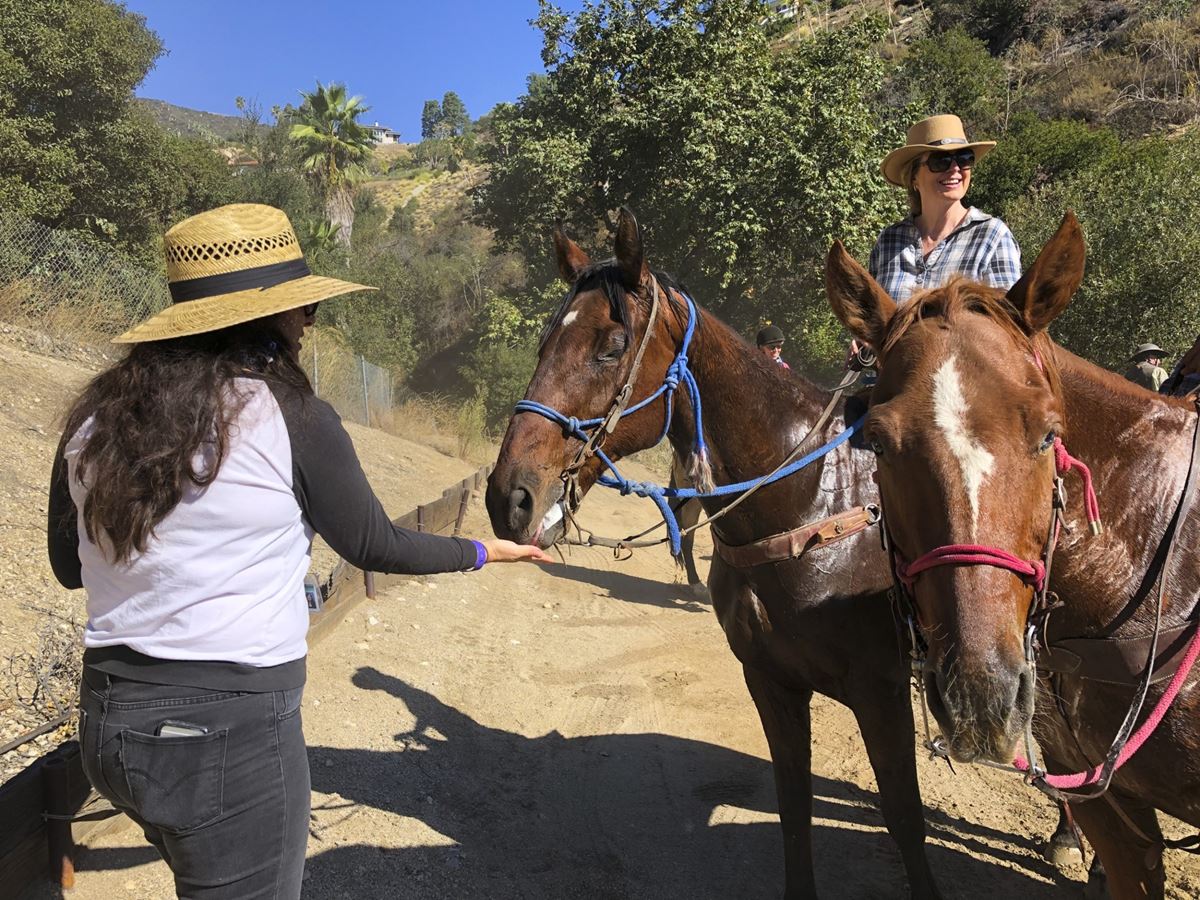Wheels yield to Heels
Bikes yield to hikers and horses. Hikers yield to horses.
Stay on the trail
Don't go off trail, create new trails or cut switchbacks.
Friendly communication
If you hear “On your left” from behind this means you should stay to your right to allow them to pass (and vice-versa).
Pack it in, Pack it out
Leave trails in the same or better condition than you found them.
Sharing the Trail
We all share a love of nature, open space and trails. Trails LA County showcases more than 550 miles of shared-use trails that provide the most users with the most trail opportunities to enjoy the stunning diversity of LA County. With courtesy and cooperation, we can keep our trails safe and enjoyable for everyone.
Review our trail etiquette guidelines below for tips on respecting other trail users and protecting the environment
- Read Sharing Our Trails, a multi-use trail etiquette guide by Concerned Off-Road Bicycle Association (CORBA) for specific guidelines for hikers, equestrians, and mountain bikers.
- Take three minutes to watch the short video below for an understanding of how to read the “Yield to” signs on multi-use trails
- Download the official Trails LA County app on the App Store or get it on Google Play so you can know whether you’ll expect to see hikers, cyclists or equestrians on your outing. The app also gives you access to information about trail closures or other news.
Respect other trail users
Share the Trail. When trail conditions require a right of way for safe passage, equestrian users have the primary right of way, hikers next and then cyclists. Use common courtesy, stand to one side of the trail to allow others to pass, and avoid blocking the trail.
Use all your senses. Stay aware, if you listen to music while you hike use only one earbud. If you sense that an area may be unsafe on the trail, leave.
Announce yourself. Let your fellow trail users know you are coming, especially from behind. If you approach equestrians from behind announce yourself loudly but calmly so you do not scare the animals – if you see a horse shying or spooking, move away from the horse and keep talking.
Control your Actions. Awareness of trail conditions at all times is vital for safe use. Especially when using a multi-use trail, if you are inexperienced on the trail, it is suggested you travel with other trail users with more experience.
Move at a safe speed. Observe the 15-mph speed limit; 5 mph when passing. Excessive speed is unsafe on multi-use trails, and can lead to injury or worse. Limited visibility around corners and curves should be a signal to slow down to the speed of hikers.
Be alert. Project alertness, confidence, and determination. Stay aware of your surroundings. Horses and slower moving individuals may be startled by faster moving trail users.

Protect the environment
Stay on the trail. Stay off closed trails and obey posted rules and regulations. Taking shortcuts, or cutting switchbacks can cause erosion, create hazards and ultimately lead to the closure of the trail.
Respect wildlife and the environment. Do not disturb, feed, or harass wildlife, or remove any plants. Attacks by mountain lions, coyotes or bobcats are extremely rare. Most snake bites occur when a rattlesnake is handled or accidentally touched by someone not watching where they are stepping or reaching. Read more safety tips for avoiding unwanted wildlife encounters here.
Revere the resource. Leave trails in the same or better condition than you found them. Always practice Leave No Trace ethics and pitch in to give back - pick up trash, volunteer on a trail project, or become a member of your local trail club.
Avoid spreading seeds. Help keep weeds out of our forests. Noxious weeds threaten our healthy ecosystems and livelihoods. Stay on trail, drive on designated roads, check your socks, bikes and horse tails for hitchhikers when you get back to the trailhead.
